history of museums
Introduction
The history of the museums of Sitges is closely linked to collecting art since its inception and well as before the opening of its first public museum, the Museum of Cau Ferrat (1933). Both the art collection that the painter and writer Santiago Rusiñol started very young, being a disciple of the painter Tomàs Moragas, in which initially forged predominates wrought iron and antiques, as the collection from the American industrialist, philanthropist and collector Charles Deering assembled by Miquel Utrillo in parallel with the construction of Maricel Palace (1910-1921) are the result of determination and perseverance in order to configure collections to enjoy and admire.
The founding years (1931-1939)
What had been the home workshop of Santiago Rusiñol during the nineties of the nineteenth century and the museum-workshop, is finally bequeathed to Sitges due to the love he professed for this population, as we read literally in his will at the artist's death (1931). In 1933, the museum became public thanks to the director of the Museum of Art of Catalonia, Joaquim Folch i Torres. From that date, the Cau Ferrat Museum is the dean of all museums of Sitges.
With the collection of Charles Deering it is just the opposite. In 1921, due to disagreements with Miquel Utrillo, he takes his art collections out of Maricel. The halls of his homes and the Palace became empty, showing empty walls, ceilings and roofs in an artistic and sumptuous complex artistic with a high artistic and architectural value, one of the most illustrious exponents of "Noucentista" architecture, as had been recognized from early construction.
In 1932, Joaquin Folch i Torres rents Maricel Palace to the descendants of Deering, with the idea of expanding the art collections of Cau Ferrat, the true center of all the museums in Sitges. In 1933 he installs the collection of wrought iron belonging to the Museum Board, in addition to the large wrought iron collection of Santiago Rusiñol located in Cau Ferrat. The Board also provides a large part of the works of the Museu de Reproductions ( Museum of Reproductions).
The Maricel Palace accommodates the Art Collection of the City of Sitges, that was started in 1911 with the acquisition of a picture by Joaquim Sunyer, "Maternidad" (oil, 1908), acquired by popular subscription following the exhibition of the artist at Galeries Laietanes of Barcelona that year. To this and other works that are property of Sitges, other deposits are added made by the Board of Museums with the will to outline and complete a discourse of painting from Sitges with a high quality and significance. These works as Processo de Sant Bartomeu, de Felip Masó; La recolecció de la malvasia, from Joaquim de Miró, or En Malavida i En Tirano from Santiago Rusiñol.
In 1936 the Maritime Collection of Emergencies Rig i Ravenous is installed, donated to Sitges by his brother, Joseph, so it could be managed by the Board of Cau Ferrat. And yet, in June of that same year, it takes place the exhibition of paintings by El Greco that are public property in Catalonia. Thus, thanks to Joaquim Folch i Torres, the Maricel Palau Maricel becomes in the museum that shelter new art collections until 1970 when it closes doors.
The front building that had been the winter residence of Deering, adjacent to the official residence and that was the dividing house between Maricel and Cau Ferrat, known as Can Xicarrons, with the departure of Deering serves for another use. The American donates the property to painter Ramon Casas, with whom he shares a great friendship. The residence of Deering at Maricel located between the Fonollar street and the waterfront remained as the property of Deering heirs until 1969.
Under Franco and beyond (1940-1994)
With the change of regime, the Cau Ferrat Museum and the Board of Cau Ferrat chartered in 1933 during the Republic to manage the Museum and its extension to Maricel remained strongly conditioned and limited by the Franco regime: the abolition of self-government institutions, the screening and expulsion of Joaquim Folch i Torres from the direction of the Art Museum of Catalonia, the transfer of all that had been governed the Catalan Government in the Provincial Government of Barcelona, and the political vicissitudes of the Provincial Government of Barcelona and City Hall of Sitges .The Board of Cau Ferrat remains in force for a few years but with zero possibilities of returning to the creative impetus of the thirties. The Museum Board remains limited to the City Hall of Barcelona. The governance and the finance affairs of the Cau Ferrat Museum and the Maricel Palace enter into a growing crisis that leads them to economic and technical decadence.
On 21 January 1966, an agreement was signed between the City Hall of Sitges and Barcelona Provincial Council to solve the situation in favor of the Barcelona Provincial Council. The Cau Ferrat is closed in 1966 for a year for maintenance works. In 1968, the Council takes charge of the full management of Cau Ferrat and Maricel Palace, burying definitely the Board of Cau Ferrat.
In 1949 a new museum is inaugurated in Sitges, Romantic Museum Can Llopis. The last descendant of the family, married the diplomat Manuel Llopis de Casades (1885-1935) bequeathed the manor to the Government of Catalonia. The vicissitudes of the war and postwar delayed the receipt of inheritance, heirs offered the property again in 1943 to the Province of Barcelona. Six years later, the museum during the first phase and gradually opens the entire building to the public. In 1961, the collection of dolls of painter and illustrator Lola Anglada moves to the second floor.
The situation of the entire Maricel complex is more complex. In 1952, the city of Sitges purchased Maricel Palace to the heirs of Charles Deering, that becomes a property of the City Hall in its entirely. Ramon Casas died without direct descendents (1934) and the house that Deering donated to him goes to his relatives named Rocamora, until the Provincial Government buys the property (1973). The waterfront building that had been the residence of Deering was still closed and unused until 1969, when the Province of Barcelona buys the property to install the collection of Dr. Jesus Pérez-Rosales
With the opening of the new museum called Maricel de Mar, the collections and halls of Maricel Palace are definitely, remaining neglected in and poor conditions of preservation until 1995.
The arrival of the Collection of Dr. Jesús Pérez Rosales and his installation at the Maricel Museum is part of the history of the cultural policy during late Francoism its effects on the museistic structure of the Provincial Government of Barcelona and the museums in Sitges. It is the other side of the coin of the intervention process of the Board of Museums of Catalonia regarding the expansion of Cau Ferrat and the installation of the Museum of Reproductions,
Between 1975 and 1995, there are several attempts by the civilian society to promote an agreement of the Barcelona Provincial Council and the City Hall of Sitges, all unsuccessful, to reconstitute the Board of Cau Ferrat or, at least, and the reopening and dignification of closed artistic collections, and to further the modernization and growth of the Museums of Sitges. The Museums do not have any other staff than the concierge staff that is in charge of customer service, and the figure of a curator or director belonging to the organic structure of the Barcelona Provincial Council.. The meritorious task carried out by curator Assumpta Gou i Vernet in the late seventies for the constitution of Sitges Heritage Association is neglected by political and administrative authorities of the time. The Maricel Palau becomes a facility congresses and conferences for various activities assigned by the Sitges Town Council since 1979. The Museu Cau Ferrat Museum Maricel de Mar and Can Rocamora and Palau Maricel, lack any regular maintenance tasks on all the problems suffered, including structural, preventive conservation and adaptation to technical regulations and also the facilities were structurally deteriorated to levels that threaten its sustainability, conservation of works of art and character of museums open to the public.
The Sitges Heritage Association (1994 -)
In 1994 began the last stage of the museums in Sitges with the constitution of the Sitges Heritage Association, the governing body and management of museums Sitges. The Sitges Heritage Association is chartered by the Council of the City of Barcelona and the City Hall of Sitges, each of which contributes to fifty percent of heritage buildings and art collections. By the Barcelona Provincial Council, Maricel Museum, the Collection of Dr. Jesús Pérez Rosales and the Romantic Museum, the collection of dolls Lola Anglada; by the Sitges Town Hall, the Museum of Cau Ferrat and the Palau Maricel with the respective contents more Maritime Collection of Emerencià Roig Raventós.
In 1995, the Sitges Art Collection and the Maritime Collection were installed on the second floor of the Museum Maricel while the Wrought Iron Collection from the Board of Museums remained in the facilities of Maricel Palace, lacking any museum project.
The restoration project, fitting and refurbishment of all the buildings of Maricel de Mar Museum, Can Rocamora and Cau Ferrat Museum in Sitges executed by the Sitges Heritage Association in 2009, aims to general sanitation and structural consolidation of buildings, compliance with standards of facilities, security and access and restoration of artistic elements inside and outside buildings. The project is funded by the Ministry of Public Works under the 1% Cultural Program, the Provincial Council of Barcelona and the Generalist of Catalonia. Started in 2010, the project ended in 2014. Simultaneously, the new museum project has been prepared in parallel of aforesaid buildings and its implementation has ended, entirely funded by the Barcelona Provincial Council.
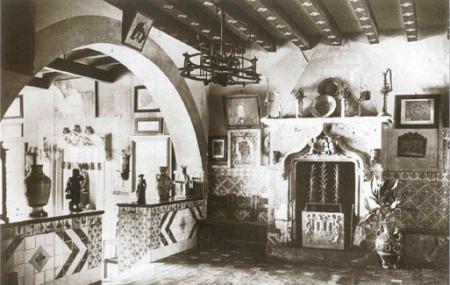
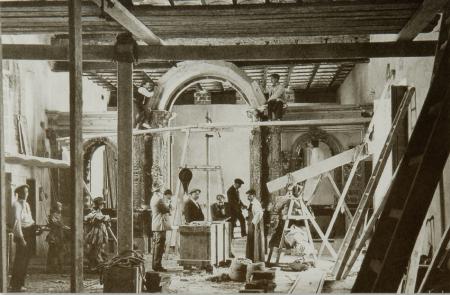
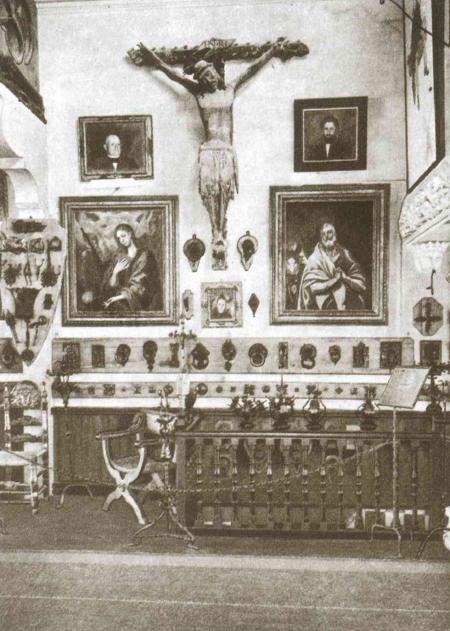
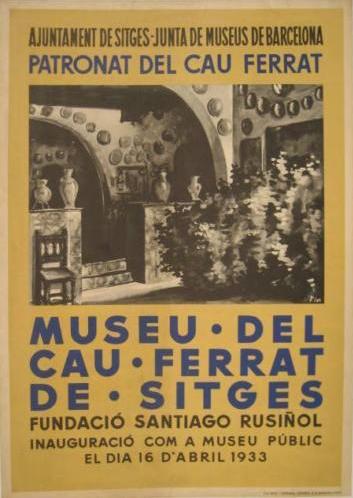
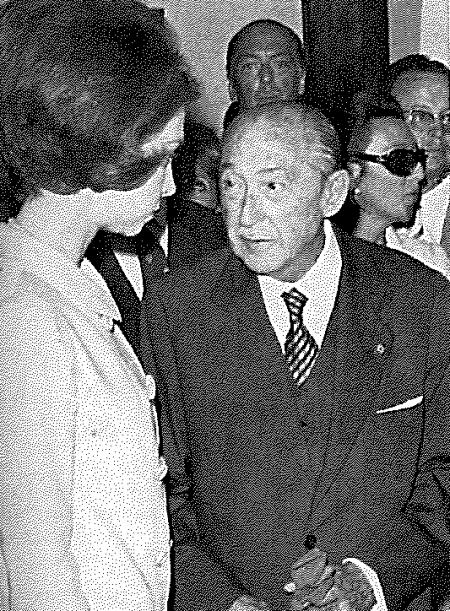
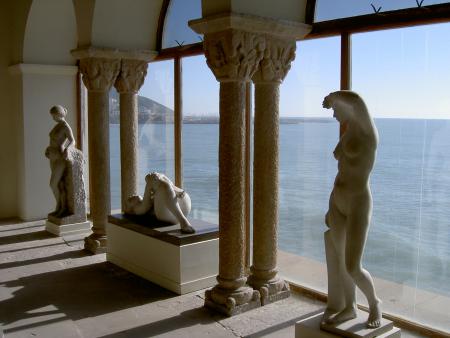
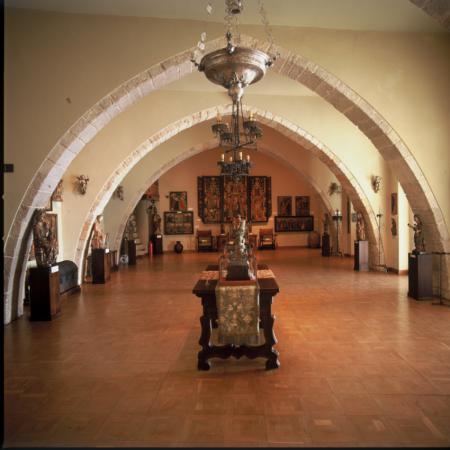
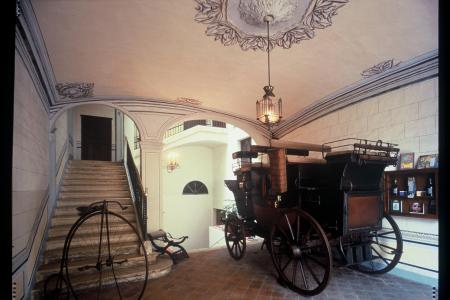
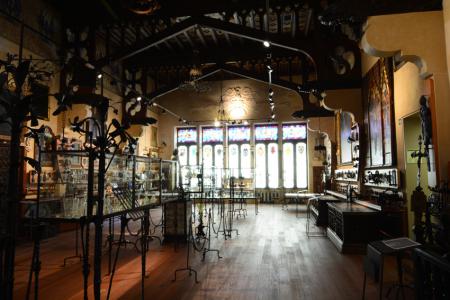



 Buy tickets
Buy tickets Buy tickets
Buy tickets


